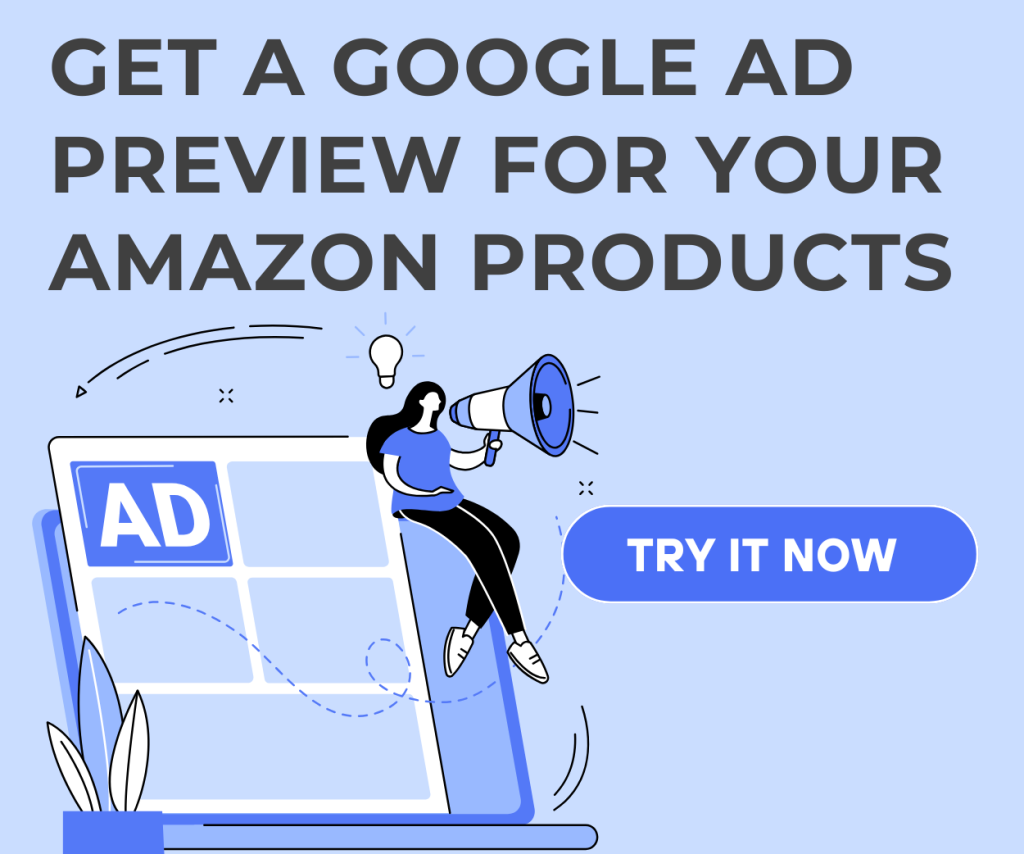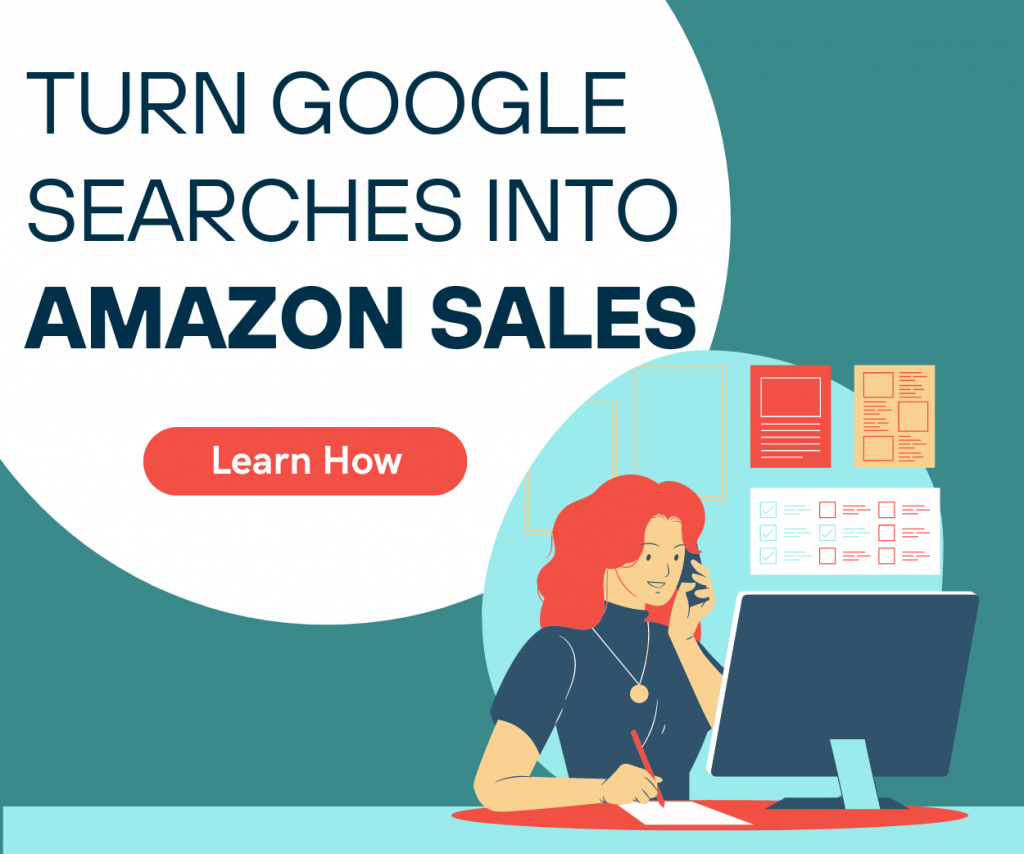When running Google Ads for Amazon products, precise campaign targeting is crucial for reaching the right audience and maximizing your return on ad spend (ROAS). Amazon sellers face unique challenges, such as limited conversion tracking and no direct access to customer data. This makes it even more important to optimize your targeting strategy to ensure your ads drive high-intent buyers to your Amazon listings.
For a comprehensive understanding of the benefits, explore Why Run Google Ads for Your Amazon Store?
In this guide, we’ll break down the key targeting strategies for Google Ads campaigns promoting Amazon products, including:
- Choosing the right Google Ads network (Search, Display, Shopping)
- Optimizing geo-targeting for maximum sales potential
- Using ad scheduling to show ads when your audience is most active
- Leveraging device targeting to adjust bids for different devices
Let’s dive into the details!
1. Choosing the Right Google Ads Network
Google Ads offers multiple advertising networks, but not all are ideal for promoting Amazon products. Selecting the right network is crucial for driving qualified traffic that is more likely to convert.
Which Networks Are Available?
- Search Network (Best for Amazon Products)
- Displays text ads on Google search results when users enter relevant keywords.
- Targets high-intent buyers actively searching for products.
- Best suited for Amazon promotions because you can bid on product-related search terms.
- Display Network (Limited Effectiveness )
- Shows image-based ads on websites, apps, and YouTube.
- Generally better for brand awareness rather than direct sales.
- Issue for Amazon sellers: Less precise targeting and lack of conversion tracking.
- Shopping Ads (Not Available for Amazon)
- Requires a product feed linked to Google Merchant Center.
- Amazon does not allow sellers to run Google Shopping Ads.
Best Practice:
For Amazon product sales, focus primarily on the Search Network to target users who are actively looking for your product. If brand awareness is a goal, consider running a separate Display campaign with remarketing (if you have external tracking).
2. Geo-Targeting: Selecting the Best Locations for Amazon Sales
Geo-targeting allows you to show ads in specific countries, states, cities, or even zip codes. For Amazon sellers, it’s essential to align your ad targeting with your product availability and demand.
How to Choose the Right Locations?
- Sell Only in Countries Where Amazon Ships
- If your product is available only on Amazon US, avoid targeting international locations where customers can’t purchase it.
- If you sell in multiple Amazon marketplaces (Amazon UK, Amazon Canada, etc.), create separate campaigns per country to control budgets and optimize performance.
- Use Performance Data to Refine Locations
- If Amazon Attribution is enabled, analyze which locations generate the most sales and prioritize those.
- Use Google Ads location reports to adjust bids for high-performing areas and exclude low-performing ones.
- Target Based on Demand & Competition
- Research Amazon sales trends to identify high-demand areas.
- If a competitor is dominating a certain region, adjust your bids higher or lower based on cost-effectiveness.
Best Practice:
Start by targeting a broad national audience, then refine your locations based on performance data from Amazon sales and Google Ads insights.
3. Keyword Targeting: Choosing the Right Search Terms
Since Google Search Ads rely on keywords to trigger ads, selecting the right ones is crucial for Amazon product promotions. The goal is to attract high-intent buyers who are actively searching for products while avoiding broad or irrelevant searches that can drain the budget.
Dive deeper into keyword strategies with our Keywords & Search Terms Guide
How to Choose the Best Keywords for Amazon Products?
- Focus on buyer intent keywords that indicate a readiness to purchase rather than just browsing.
- Match keywords with Amazon listings to maintain consistency between the ad copy and the product page.
- Use long-tail keywords that are more specific and have higher conversion potential.
- Leverage keyword research tools like Google’s Keyword Planner to find relevant search terms with strong commercial intent.
Competitor Keyword Targeting: Should You Bid on Rival Brand Terms?
While bidding on competitor brand keywords is a common strategy in Google Ads, it requires careful execution for Amazon products. Instead of directly targeting competitor brand names—which can lead to high costs and compliance risks—focus on alternative product-related search terms. A strategic approach ensures relevant traffic while maintaining cost efficiency and policy compliance.
What Works?
- Targeting alternative product keywords that potential buyers may search for when considering a competitor’s product.
- Highlighting key differentiators in the ad copy without mentioning competitor names (to comply with policies).
What to Avoid?
- Bidding directly on competitor brand names can lead to high CPCs and lower conversion rates.
- Mentioning competitor brands in ad copy (violates Google & Amazon guidelines).
Best Practice:
Instead of aggressively bidding on competitor names, focus on product-related keywords that align with what buyers are searching for. This ensures relevant traffic while keeping costs manageable.
4. Negative Keywords: Filtering Out Irrelevant Traffic
Negative keywords help prevent ads from appearing for searches that are unlikely to convert, reducing wasted ad spend.
Learn more about avoiding common pitfalls in Avoid These Google Ads Pitfalls When Promoting Your Amazon Store.
How to Use Negative Keywords Effectively?
- Exclude non-buyer intent searches to prevent ads from showing to users looking for information rather than making a purchase.
- Avoid competitor brand terms (if applicable) to prevent bidding on searches that are unlikely to lead to conversions.
- Refine the negative keyword list over time by reviewing search term reports and excluding irrelevant queries.
- Monitor the Search Terms Report: Regularly review search queries triggering your ads and exclude those that drive unqualified traffic.
- Segment Negative Keywords by Match Type: Use broad, phrase, and exact match negatives strategically to avoid blocking valuable variations of your targeted keywords.
Best Practice:
Negative keyword optimization is an ongoing process. Regularly update your list based on search term reports, CTR trends, and conversion data to ensure ad spend is directed toward qualified traffic. By proactively refining negative keywords, you can maintain efficiency and maximize your return on investment.
5. Ad Scheduling: Running Ads at the Best Times for Sales
Not all hours of the day generate the same results. Ad scheduling (dayparting) allows you to run ads only when your audience is most likely to convert.
Enhance your scheduling strategy by understanding Time of Day Segmentation.
How to Optimize Ad Scheduling?
- Analyze Amazon Sales Trends
- Review historical data from Amazon Business Reports and Google Ads to identify peak shopping hours. Adjust bid strategies accordingly.
- Example: If most sales happen between 5 PM – 10 PM, adjust your schedule to focus on these hours.
- Check Google Ads Performance Reports
- Identify the times when CTR and conversions are highest.
- If your ads have low engagement in the early morning, consider pausing or reducing bids during those hours.
- Adjust Bids Based on Time of Day
- Increase bids during peak shopping hours (e.g., evenings, weekends).
- Lower bids or pause ads during non-performing hours to avoid wasted spend.
Best Practice:
Start with a 24/7 schedule, then adjust based on Google Ads & Amazon data to focus on the most profitable times.
6. Device Targeting: Optimizing Ads for Mobile vs. Desktop
With over 70% of Amazon shoppers using mobile devices, mobile optimization is critical for successful Google Ads campaigns. Device targeting allows you to adjust bids based on how users engage with your ads.
How to Optimize Device Targeting?
- Prioritize Mobile Users
- Most Amazon sales come from mobile users, so allocate higher bids for mobile traffic.
- Use mobile-optimized ad copy, such as:
✅ “Fast 2-Day Shipping – Order on Amazon Now!”
✅ “Shop Amazon’s #1 Rated Wireless Headphones”
- Use Google Ads Device Reports
- Identify which devices drive the best engagement.
- If desktop traffic has high CTR but low conversions, consider reducing bids on desktop and increasing mobile bids.
- Optimize Landing Page Experience
- Since your ad directs users to Amazon, ensure your Amazon product page is mobile-friendly.
- Check that images, descriptions, and CTAs are easy to navigate on small screens.
Best Practice:
Test different bid adjustments for mobile, desktop, and tablet. In most cases, increasing bids on mobile while lowering bids on desktop/tablet leads to better performance.
7. Budget Allocation & Bid Adjustments Based on Targeting
Since not all keywords, audiences, devices, or locations perform equally, optimizing bids based on targeting insights can improve results.
Bid Adjustments by Targeting Factor
Keyword Performance:
- Increase bids for high-converting, high-ROI keywords that generate strong traffic and sales.
- Decrease bids for broad, informational, or low-intent keywords that drive clicks but few conversions.
- Pause low-performing keywords that consistently drain the budget without results.
Device Targeting:
- Increase mobile bids if most conversions happen on mobile (common for Amazon purchases).
- Lower bids for desktop/tablet if engagement is high but conversion rates are low.
- Monitor cross-device behavior using Google Ads reports to optimize allocation.
Location-Based Bid Adjustments:
- Increase bids in high-performing regions where Amazon sales are strong.
- Reduce or exclude low-converting locations that result in high costs without sufficient returns.
- Run location reports in Google Ads to refine targeting over time.
Time of Day & Ad Scheduling:
- Increase bids during peak shopping hours when your audience is most active.
- Lower bids or pause ads during off-hours to avoid unnecessary spend.
- Use historical sales data from Amazon and Google Ads to adjust your schedule dynamically.
Best Practice:
Start with manual bidding for better control, then transition to automated bidding strategies like Target ROAS if using Amazon Attribution to track conversions. Also, regularly review Google Ads & Amazon sales reports to ensure bid adjustments align with actual purchasing behavior. Focus budget on the best-performing keywords, devices, locations, and timeframes to drive higher ROAS.
Final Thoughts: Mastering Campaign Targeting for Amazon Products
Choosing the right campaign targeting strategy is essential to driving qualified traffic and maximizing ad performance for Amazon product sales. Here’s a recap of the key strategies:
- Select the right network (Search is best for direct Amazon sales).
- Target locations strategically based on product demand and Amazon availability.
- Optimize ad scheduling to reach buyers at the most profitable times.
- Prioritize mobile targeting, as most Amazon purchases happen on mobile.
- Use audience signals to refine targeting beyond keywords.
- Refine keyword & negative keyword lists to eliminate wasted spend.
- Adjust bids and budget allocation based on performance data.
- Analyze competitor positioning to capture additional market share.
By continuously analyzing data and adjusting targeting settings, you can optimize ad spend, increase click-through rates, and drive more sales to your Amazon listings.
Coming Up Next in the Series
In Part 5, we’ll cover Bidding Strategies for Google Ads and how to optimize your budget for Amazon product promotions. Stay tuned!





Stop the wasted ad spend. Get more conversions from the same ad budget.
Our customers save over $16 Million per year on Google and Amazon Ads.